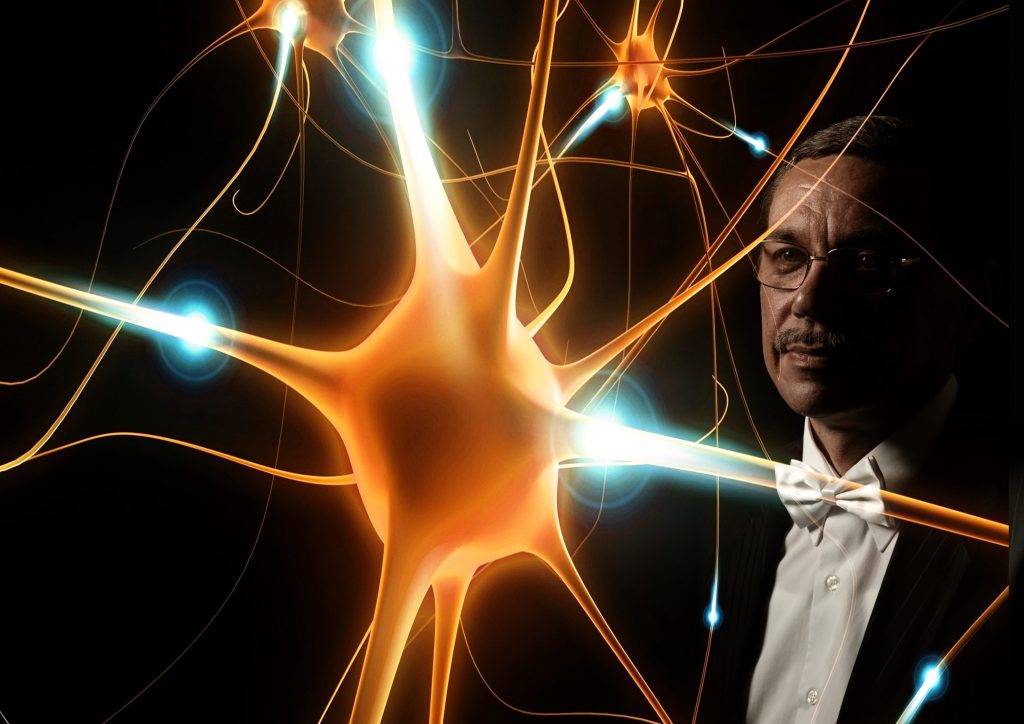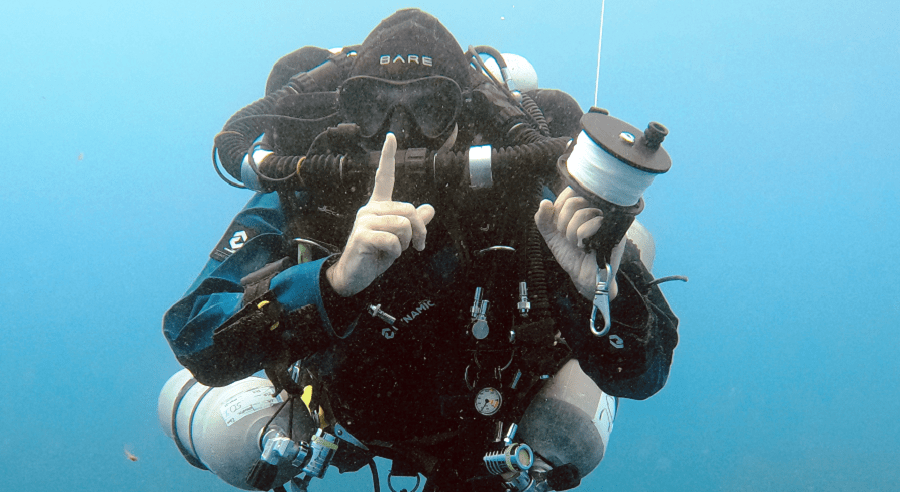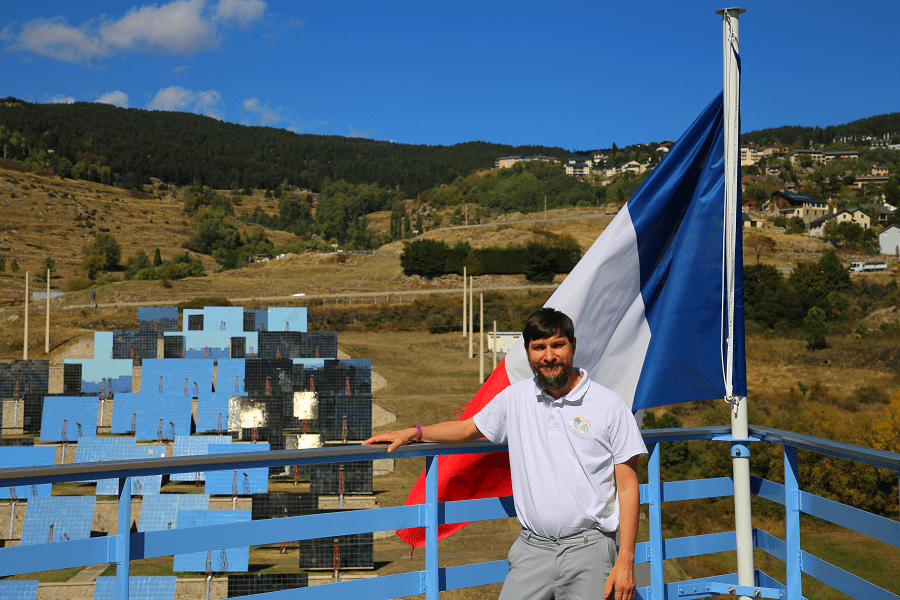Eryomin Alexey Lvovich – Doctor of Medical Sciences, “occupational medicine” scientific speciality. “Kuban Institute of Medicine” Nonprofit Educational Private Institution of Higher Education, professor of Hygiene and Ecology Department. “Hygiene and Ecology Scientific and Research Institute” LLC founder, scientific director. 25 years of general experience in state sanitary-epidemiological surveillance:
● since 2017 – Krasnodar Regional Branch of the National Scientific Medical Society of Hygienists and Sanitary Doctors, a public organization, chairman
● 2005 – 2019 Office of the Federal Service of Rospotrebnadzor for the Krasnodar Territory, chief specialist expert, 2012, 2017 – delegate to the All-Russian Congresses of Hygienists and Sanitary Doctors. He was awarded the medal “95 years of the State Sanitary and Epidemiological Service of Russia.”
● 2008 – present, Kuban Medical Institute, professor, head of the hygiene and ecology course; 2012 – participant of the Congress of Biophysicists of Russia
● 1997- 2008 Krasnodar Municipal Medical University of Higher Nursing Education, Associate Professor, Department of Fundamental and Preventive Medicine. Laureate of the All-Russian contest “Science for Society 2004” – Russian Humanitarian Scientific Foundation under the Government of the Russian Federation. Elected in 2001 a full member of the British Ecological Society and the Royal Institute of Public Health and Hygiene, in 2006 – corresponding member of the International Academy of Ecology and Human Safety Sciences.
● 1992-1997 Kuban Medical Academy, assistant of the Pathological Physiology Department. Teaching experience – 26 years.
● 1992-2002 Krasnodar City Hall – Deputy Head of the Foreign Economics and Foreign Relations Department; Krasnodar Public Information Center, Director. Krasnodar Regional Center of National Cultures, Chairman of the Board, when the Center became the UN associate member he participated in conferences of the UN and the European Union in Belgium, Great Britain, Hungary, Germany, Greece, Poland, and the USA. Information exchange UN, UNESCO, WHO.
● 1990-1993 Krasnodar City Council of Peoples’ Deputies, deputy of the City Council, deputy commission chairman.
● 1981-1991 Krasnodar City Center for Sanitary and Epidemiological Supervision, doctor, head of the occupational health department
Expert:
● Auditing according to sanitary legislation: food safety, working conditions, assessment of the effectiveness of treatment facilities and protective measures against physical, chemical, biological environmental factors; consulting on business risks in the field of hygiene, ecology, labour protection, occupational pathology, food poisoning, water epidemics;
● Development of HACCP food safety programs, monitoring of sanitary rules compliance, sanitary protection zones projects, sanitary protection zones for water sources, waste classification, carcinogenic hazardous passports; measurements and laboratory tests outsourcing, working conditions special assessment verification, professional risks assessment, professional examinations;
● Independent examination: before inspections, consultations on the effectiveness of the sanitary measures, in conflict situations – in a law court.
«…What is more powerful than reason? It is power, strength, and dominion over the whole cosmos. The latter itself gives rise to the power that controls it. It is more powerful than all other forces of nature… Reality is almost always ahead of the prophets’ imagination… The impossible today will be possible tomorrow ». K.E.Tsiolkovsky
What is noogenesis and what are the main properties of this phenomenon?
Noosphere is a term whose appearance dates back to the 1920s, after the lectures of V.I. Vernadsky in the Sorbonne, from E. Le Roy and P. Teilhard de Chardin. Noogenesis (from other Greek. Νόος – mind and γένεσις – origin, birth) means appearance and evolution of the mind. The term appeared in 1955 in the book of anthropologist and philosopher P. Teilhard de Chardin. Since there was no exact and unambiguously named concept, many interpretations appeared in which various meanings were embedded, including “the modern period of the evolution of life on Earth, which means the transformation of the biosphere into the sphere of the mind – the noosphere”, “evolution, controlled by human consciousness”, and others. A unified interpretation of noogenesis according to the primary source: the emergence of reason following geogenesis (the appearance of the Earth) and biogenesis (the appearance of life); … humanity forms a new sphere of existence on Earth: the reason sphere or the noosphere… It should be noted that ноо- (Russian), noo- (English), 智慧 (Chinese) – is not only the earliest term known from the ancient Greek “νόος”, but also by dictionary meanings – combining the phenomena “mind, reason, intellect, thought, insight, wisdom ”into a single phenomenon.
In 2005: “Noogenesis is the process of the development of an intelligent system in space and time. Noogenesis is a set of regular, interconnected, relatively elementary structures and processes characterized by a certain time sequence of structural and functional transformations of the entire hierarchy and interacting with each other. The concepts of “intelligent systems”, “information logistics”, “intellectual energy”, acceleration, and strength potential are combined into the theory of intelligence.”
Thanks to this, “the noogenesis concept” was actively introduced into scientific usage, as the concept of the intelligent system’s evolution. The biophysical parameters of intelligent energy were highlighted – the amount of information, the amount of acceleration (frequency, speed) and its transmission distance, an analogy between the human brain consisting of a large number of neurons and community of people.
From the evolutionary historical development point of view, such concepts are known to appear during evolution (the evolutionary teachings of C. Darwin) and the first intelligent organism anthropogenesis according to the biological systematics of C. Linnaeus – Homo sapiens, the concepts of phylogenesis, morphogenesis, cephalization, system genesis, and cognitive systems autonomy. Looking at the evolution of intelligence in the course of individual development, such concepts as embryogenesis, ontogenesis, somatogenesis, morphogenesis, neurogenesis, the higher nervous activity of I. P. Pavlov are known. The concept of “noogenesis” can be attributed to an interdisciplinary level, as it relates to a number of natural, technical, and humanitarian sciences, the term is used in medicine, biophysics, psychology, semiotics, mathematics, information technology.
The emergence of the mind is one of the main phenomena in the evolutionary appearance. The intelligent systems phenomenon cognition – the mind (noogenesis) appearance is reduced to:
● the Homo sapiens mind evolution and emergence (phylogenesis);
● new thoughts in the brain (a creative idea synthesis, insight, eureka);
● the intelligence evolvement in the course of individual development (ontogenesis);
● the hypothesis of the human population’s desire to unite in a global intellectual system;
A number of scientific papers examine the human intellectual system appearance patterns and the distinctive features parameters (the working memory, the ability to predict, a multi-level (6 layers of neurons) hierarchy of valuable information systematic selection, consciousness, memory, parameters produced by humanity and stored in various media, etc. Possibilities limitations are determined for some human intellect physical parameters. Insight on inspiration appearance concepts.
We introduced a new interpretation of the scientific term – “noogenesis”, as the intellectual emergence and evolutionary development. By analogy with the basic biogenetic law, a hypothesis is put forward for the basic law of mankind’s evolution, which describes the relationship between the evolution of the human brain and mankind’s development. The number of the main “components” that make up the human brain and the “components” that create humanity become approximately equal.
In comparative semantics, a series of long-known but forgotten terms should be noted: Noofelia – a doctrine by which the value of anything is determined by the degree to which it contributes to the intellectual development and the intelligent creatures interests; Noocracy; and those that appeared in the XXI century: noopolitics, intellectual management, noometrics, noopharmacology.
You published research results recently on the living systems evolution and mankind’s evolution as a single living system. What are the basic patterns of mind evolution?
The law of increasing adaptation rate: the rate of adaptation, reflection, movement, exchange of matter and information increases at each new level of biological systems evolution and organization, while adaptability (of an organism, population) improves with the increased response speed on environmental changes (including the communication speed between intel components).
● Unicellular organism – the speed of ions movement through the unicellular organism membrane is ~ 10–10 m/s;
● water through the membrane ~ 10–6 m / s, intracellular (cytoplasm) ~ 2*10–5 m/s;
● blood through a multicellular organism vessels ~ 0.05 m/s,
● impulse along nerve fibres ~ 100 m/s;
● sound (voice, audio) communications of a multi-organism population (mankind) ~ 300 m/s;
● quantum-electronic connections within the population ~ 3*108 m/s (radio-electromagnetic waves, electric current, light, video, Opto, telecommunications speed);
The intellectual components critical number law: intelligent systems can be formed when critical quantities of intellectual components and the communications between them are reached. When the intelligent components’ number reaches n ≥ 1 billion, the noorevolution phenomenon can be observed – the transition of an information system quantitative evolvement to a qualitatively new autonomous intelligent system.
Noogenesis during individual development (ontogenesis) of the human brain originates from 1-2 primary embryonic cells, which increase in number during cleavage and fission at the morula – blastula – gastrula stages, forming the corresponding germinal lobe and its differentiation. The embryo nervous system is formed. By birth, a human fetus’s brain volume, reaches 375 cm3 according to some sources, by the age of 10 – 1300 cm3. Brain structures morpho-functional maturation ends at the age of 13 and the final morphofunctional formation refers to the age of 16-17. There are 86 billion neurons in the brain of H. sapiens in the process of adult ontogenesis and phylogenesis according to modern data.
You can compare each person living on Earth with a separate nerve cell in the brain. World intelligence may be considered as analogue to human brain. Billions of people currently living on the planet are certainly the heirs of the world’s richest cultural heritage in the industrial, social and mental sense, the genetic custodians of the “living RAM” of the global intellectual system.
What are the main trends in scientific research in the field of noogenesis?
Among the methods helping in further intellect development, optimization and increase are noted:
● Bioinformatics,
● Genetic engineering,
● Noopharmacology,
● Memory loading,
● Brain stimulation,
● Effective use of altered states of consciousness,
● The use of non-human consciousness – information technology (IT),
● Artificial Intelligence (AI) technologies
● Etc.
The two greatest mysteries of nature are Intellect and the Universe. The origin of the brain, perception, consciousness, memory, neuroplasticity, etc. remain unresolved neurobiology problems. Currently, for a better understanding of the brain structure (the method of “reassembly”) and functioning, as well as for the intellectual capabilities development and intelligence enhancement purpose, megaprojects have been announced. The BRAIN Initiative (each neuron activity mapping) is a megaproject developed in the USA and the Human Brain Project (brain activity imitation on supercomputer) in Europe; similar directions are being developed in China and Japan.
What are the new approaches to mental work and creativity optimization? What is their connection with the information hygiene you introduced?
Information hygiene – an interdisciplinary section of hygiene science, having the right to independent development, both in general and in the subsections of the disciplines with which it is associated. These are common to communal hygiene, psychohygiene, occupational hygiene and physiology, human and environmental ecology, social psychology, public health and healthcare, computer networks and mass media informatics, journalism, sociology, conflict studies, management, political science, state and international security, etc.
Modern increasing information flows are the consequences of information technology revolution, characterized by the fact that for 6.6 billion people there are 6 billion telephones (Ericsson 2012 data), 6 billion TV sets (Guinnes Today, 2012), 2 billion computers (Gartner, 2012), 2.3 billion Internet users (Internet World Stats, 2012).
These come with some negative consequences, numerous studies have shown that individually or socially significant information, in accordance with the emotions origin information theory, affects:
● psycho-emotional overstrain formation,
● development of emotional stress and its consequences in the form of a number of the cardiovascular system diseases (hypertension, atherosclerosis, cardiac ischemia, stressful damage to the heart, heart attacks, strokes),
● digestive (peptic ulcer disease),
● body’s immune system,
● oncological diseases,
● mental illness occurrence,
● increased injuries and suicides
Thus, information can play a significant role in the occurrence of whole classes of diseases’.
According to the state standard, it is proposed to determine the “amount of information” in bits and bytes units. The concept of “information” is defined by law as material (messages, data) regardless of their presentation form. When measuring, it is important that the law determines that “measurement is an operation set performed to determine the magnitude quantitative value”. By non-systemic magnitude units, a Government Decree classifies “information transfer rate”, in bit/s and byte/s.
Brain energy, ambient temperature, and the highest intellectual achievements. From numerous publications, it is known that the human brain consumes 1/10 of all energy ~ 106 J. This energy could heat more than 9 litres of water from 36º C to 100º C. If this energy was not spent on intellectual activity and heat transfer, then it would be enough for the brain, which consists of 80% of water, to “boil” six times a day. In the case of habitat elevated temperature, heat transfer by the brain is difficult. With hyperthermia (a pathological process with a body temperature increase), the brain biochemical processes may be disturbed, many enzymes catalytic activity may be lost, moreover, it can lead to heat strokes (t = 41-42 ° C), protein denaturation (above t = 43 ° C), and irreversible brain damage.
Chronic overheating in an industrial setting can lead to functional disorders of the central nervous system – neurasthenia, the development of diencephalic syndromes. Under normal climatic conditions, heat transfer happens mainly due to the emission of approximately 45% of all heat removed by the body, convection – 30% and evaporation – 25%. In hot regions or rooms, when the air temperature is 37 ° C and higher, heat transfer mechanisms are limited and heat is eliminated by evaporation mainly. In the conducted studies, stress resistance and reliability were evaluated using the example of people working on heights, car, bus, taxi drivers, and other professions.
Nootropic drugs – (Greek νους – mind and τροπή – turn, change) pharmacological drugs (nootropics) that have an activating effect on learning, improve memory and mental activity, combined in the group of “psychostimulants and nootropic drugs” with the N06ВХ code in accordance with the Anatomical Therapeutic Chemical Classification (ATC) (maintained by the WHO Collaborating Center for Drug Statistics Methodology in Oslo, Norway).
Nootropic drugs use is associated with ethical issues. The first nootropic drugs appeared in the early 70s of the twentieth century. Currently, about 15 nootropics are registered in Russia, significantly less than the nomenclature on the foreign medicines markets, and often not enough to satisfy both medical practice and consumers who want to adjust their intellectual capabilities.
It is possible to determine specific types of nootropic drugs usage strategies depending on the intellectual activity:
● for employees with advanced training, additional education, language or new technologies learning, engaged in creative analytical work, development, and implementation of innovations – drugs that affect memory, learning, large information amount perception;
● for specialists in the management of complex equipment and fast-moving technological processes, vehicles (including pilots, drivers), the performance of work in extreme conditions – drugs that improve brain activity, increase the level of wakefulness, stimulate the central nervous system, accelerate reflection.
It should be noted that legal, administrative, and ethical issues may arise when people who are intellectually fully developed improve their mental abilities with the help of chemicals. These are similar problems to those in the case of bioethical and medical consequences of anabolic steroids and doping in professional sports. This makes the development of studies on drugs’ effectiveness and comparative characteristics evidence more important.
Against the “information boom” background and the negative consequences of increasing mental stress, a continued increase in mental and stress-related morbidity is recorded. What is the impact of social networks’ on human mental health?
The increased information flow affects health and involves increased activity for health care professionals. Innovations are new or significantly improved products, processes or new business or workplace organizational methods which in external relations, are considered to optimize human intellectual activity.
More than 350 million people worldwide were suffering from depression in 2012 according to the WHO. Neurosis and reactive depression can be the result of traumatic experiences, including at work, with excessive brain load due to stress, related to both physiological and psychosocial factors. If in 1990, mental and neurological disorders accounted for 10% of the total indicator of life expectancy reduction as a result of diseases and injuries (DALY), then by 2020 the burden of these disorders can increase to 15%. In this regard, the WHO adopted a resolution on the need for implementation of comprehensive measures on national levels.
The information challenges of our time are facilitated by an increase in the vehicles speed and number, adaptive needs increase when travelling in hermetic space; the development of new territories (deserts, polar regions with an unfavourable climate) and spaces (underwater, high atmospheric layers, space), leading to increasing requirements for scientific research, knowledge, and competencies.
With the traditional information-dependent diseases growth, epidemiological analysis reveals the emergence of new ones:
● syndromes – computer vision syndrome [Reddy S.C., 2013];
● addictions – pathological addiction from television [Kubey R., 2002];
● from social networks [Karaiskos D., 2010];
● internet additions;
● depression caused by social networks [Rosenquist J.N., 2011];
● Internet addiction related psychoses [Nitzan U., 2011];
● manias – sensory-related to the internet [Swan M., 2012],
● ludomania – addiction to computer games [Brus A., 2013];
● phobia – nomophobia, fear of being unconnected [Krajewska-Kułak E., 2012];
● internet addiction related suicides [Stieger S., 2013];
Your conclusions and practical recommendations
● Priority development: preventive recommendations on information hygiene, determination of rational ways for designing systems and organizing information processes, increasing the human-information environment interaction effectiveness.
● Ensuring comfortable working conditions, including optimal temperature levels, can both provide conditions supporting higher intellectual achievements and provide favourable conditions for neuro-emotional stress in a number of professions.
● The physical fitness enhancement with the achievement of established indicative standards could be considered as one of the methods to increase stress resistance and facilitate an adequate response when a person adapts to changing external stress factors.
● Further development in the area of noopharmacology is necessary, in terms of both the provision of evidence-based medicine criteria for nootropic drugs and for the study of ethical issues related to their use.
● At the level of health legislation, a number of hygiene standards require both harmonization with international standards (the information measurement, etc.) and development of special sanitary rules for a number of professional groups.
What is your forecast for the noosphere technologies development?
It is predicted that humanity will strive for a single, organizational-closed information-intellectual system. Superintelligence can be realized in the form of Global Intelligence on planet Earth. In the 21st century, further discoveries and research, of the intellect formula and the mathematical foundations of the mind, the translation of “intellect” to the mathematical physiology and physics, could help to understand the highest ideas and deep patterns of the world around us. The search for parallels between the human and mankind formation must be continued: it can provide the basis for confidence that mankind intellect will cope with the most unexpected and sometimes dangerous problems that arise during its development. The main concept study and knowledge formation in this area are comparable to the quantum physics and the universe evolution, the origin of life and biological evolution investigation.
The development of information hygiene and new methods for optimizing neuro-emotionally intense innovative work, adequate mental stress, noopharmacology, optimal sound levels, light flux, visual information, information complexity and importance criteria, dose-dependence relationships, the info-overloads consequences epidemiology, and risk groups could provide an answer to the modern times health challenges, in the strategic development of hyper-information society.
Interview: Ivan Stepanyan











